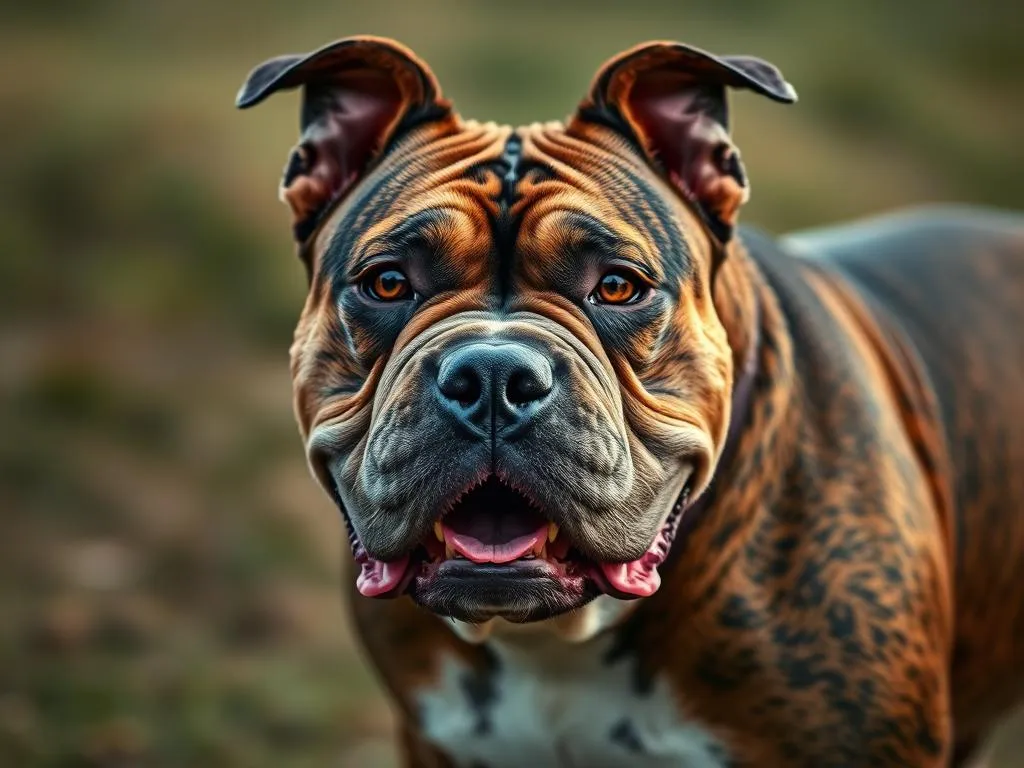
Introduction
Dog breeds play an essential role in the world of pets. A dog breed is a group of dogs with specific characteristics that set them apart from others, whether in size, appearance, or temperament. Breeds have been developed over centuries, often for specific tasks such as herding, hunting, or companionship, leading to a rich tapestry of canine diversity.
Among these diverse breeds, the American Bully stands out as a distinct and popular choice for many dog lovers. This breed has gained significant traction over the years, primarily due to its friendly demeanor and muscular build. However, understanding the various American Bully bloodlines is crucial for anyone looking to welcome this breed into their home. Each bloodline can influence the dog’s temperament, physical characteristics, and health, making it essential for prospective owners to familiarize themselves with these differences.
Understanding Dog Breeds
What is a Dog Breed?
A dog breed refers to a specific group of domestic dogs that share common ancestry and characteristics. These characteristics can include size, coat type, temperament, and behavior. Breeds are classified into various categories based on their traits and historical purposes, such as working dogs, toy breeds, and terriers.
Understanding a specific breed helps potential owners make informed decisions about which dog may best fit their lifestyle. For example, active families may prefer breeds known for their high energy levels, while those seeking a more relaxed companion may look for calmer breeds.
The Role of Genetics in Breeding
Genetics play a pivotal role in determining various traits within dog breeds. The inherited characteristics can affect not only a dog’s appearance but also its behavior and overall health. Breeders often focus on specific traits to enhance certain qualities, whether they seek to produce a dog with a particular coat color or a specific temperament.
This genetic foundation is particularly important within the American Bully breed, as the various bloodlines can have distinct traits influenced by their lineage. Understanding this genetic influence can help prospective owners choose a dog that aligns with their expectations.
The American Bully Breed
History of the American Bully
The American Bully is a relatively new breed, developed in the late 20th century. Its origins can be traced back to the American Pit Bull Terrier and the English Bulldog, among other breeds. The goal was to create a dog that combined the strength and agility of the Pit Bull with the broader, stockier build of the Bulldog, resulting in a loyal and affectionate companion.
As the breed evolved, different bloodlines emerged, each with unique traits and characteristics. The American Bully was officially recognized by the United Kennel Club (UKC) in 2013, which has since contributed to its popularity and widespread acceptance.
Physical Characteristics
The American Bully is known for its muscular and robust build. They typically range in size from 13 to 21 inches in height, depending on the specific bloodline. Their weight can vary significantly, usually between 70 to 120 pounds.
Distinctive features of the American Bully include a broad head, pronounced cheek muscles, and a thick neck. Their coat is short and can come in various colors and patterns, making them visually striking. Understanding these physical traits is essential for potential owners, as they can indicate the type of care and environment the dog will thrive in.
Temperament and Behavior
In terms of temperament, the American Bully is generally known for being friendly, loyal, and protective of its family. They are often described as affectionate dogs that thrive on human interaction. However, like any breed, they can have their share of behavioral challenges. Common issues include stubbornness and a tendency towards territorial behavior.
Training and socialization from an early age are vital to ensuring that an American Bully grows into a well-adjusted adult dog. With proper guidance, they can be excellent family pets, known for their playful and loving nature.
Bloodlines of the American Bully
What are Bloodlines?
In dog breeding, the term “bloodline” refers to the lineage of a dog, tracing its ancestry and inherited traits. Bloodlines can significantly influence a dog’s physical appearance, temperament, and even health predispositions. Understanding the different American Bully bloodlines allows prospective owners to make informed choices based on their preferences and lifestyle.
Major American Bully Bloodlines
Standard Bloodlines
The American Bully has several recognized bloodlines, each with its own unique characteristics. Here are some of the most prominent bloodlines:
-
Gottiline: Known for its compact size and muscular build, the Gottiline bloodline is characterized by its stocky appearance and thick neck. These dogs often have a playful disposition and can be great family pets.
-
Razors Edge: This bloodline is popular for its larger stature and impressive muscle definition. Razors Edge American Bullies are known for their calm demeanor, making them suitable for families. They often have a blocky head and a wide chest.
-
Mikeland: A less common bloodline, Mikeland American Bullies are recognized for their striking looks and athletic build. They tend to be very active and require regular exercise to maintain their health.
-
Shorty Bull: This newer bloodline is bred to be smaller, focusing on compactness and a more diminutive size. Shorty Bulls are friendly and energetic, often making excellent companions for those with limited space.
Each bloodline has its own unique set of traits, so understanding these differences is crucial for potential owners.
Comparison of Bloodlines
Physical Traits
When comparing the different American Bully bloodlines, notable differences in size, build, and coat can emerge. For instance, Gottiline dogs are generally shorter and more compact, while Razors Edge dogs tend to be taller and more muscular. Owners should consider their living situations and how much space they have when deciding which bloodline suits them best.
Temperament Differences
Temperament can also vary between bloodlines. Gottiline American Bullies are often described as playful and outgoing, while Razors Edge dogs may be more laid-back and calm. Understanding these temperament differences is crucial for families, especially those with children or other pets.
Choosing the Right Bloodline
Factors to Consider
When selecting the right American Bully bloodline, several factors should be taken into account:
-
Lifestyle Compatibility: Consider your activity level and living situation. If you lead an active lifestyle, a more energetic bloodline like Mikeland may be a better fit. Conversely, if you prefer a laid-back companion, a Razors Edge might be ideal.
-
Experience Level of the Owner: First-time dog owners may fare better with bloodlines known for their easier temperaments, such as Gottiline. Seasoned dog owners may be more equipped to handle the challenges that come with training and socializing a more assertive line.
Health Considerations for American Bullies
Common Health Issues
Like all breeds, American Bullies can be predisposed to certain genetic health conditions. Some common issues include hip dysplasia, skin allergies, and certain heart conditions. Understanding the health considerations associated with specific bloodlines can help prospective owners make better-informed decisions.
Preventative Care
Preventative care is vital for any dog, but it is particularly important for breeds like the American Bully, which can be prone to specific health issues. Regular health screenings and responsible breeding practices are essential to ensure the longevity and well-being of your pet. Always consult with reputable breeders who prioritize health testing to avoid potential issues down the line.
Training and Socialization
Training Tips for American Bullies
Training an American Bully requires consistency, patience, and positive reinforcement. Here are some effective techniques to consider:
-
Start Early: Begin training and socialization as soon as you bring your puppy home. Early exposure to various people, environments, and experiences can help in developing a well-rounded adult dog.
-
Positive Reinforcement: Use treats, praise, and play as rewards for good behavior. This approach encourages your dog to repeat desired behaviors.
-
Obedience Classes: Enroll in obedience classes to provide your American Bully with structured training and socialization opportunities.
Behavioral Challenges
Common Issues and Solutions
Though American Bullies are generally friendly, they can exhibit behavioral challenges. Some common issues include:
-
Aggression: Proper socialization from a young age can help mitigate aggressive tendencies. Always supervise interactions with other dogs and people.
-
Anxiety: Some American Bullies may suffer from separation anxiety. Gradual desensitization to being alone can help ease this issue.
-
Stubbornness: Consistency in training is key. If your dog is stubborn, consider using engaging training methods to capture their interest.
Conclusion
Understanding the various American Bully bloodlines is crucial for anyone considering bringing one of these loyal and affectionate dogs into their home. Each bloodline has unique characteristics, influencing not only the dog’s appearance but also its temperament and health.
Responsible ownership begins with research and understanding, ensuring that your future pet aligns with your lifestyle and expectations. By choosing a reputable breeder and prioritizing training and socialization, you can pave the way for a harmonious relationship with your American Bully.
As you embark on your journey to find the perfect companion, take the time to explore the rich diversity within the American Bully breed and its bloodlines. Your commitment to understanding these aspects will ultimately lead to a fulfilling and rewarding experience for both you and your new furry friend.







